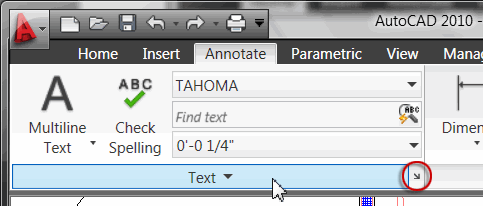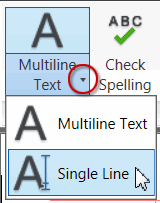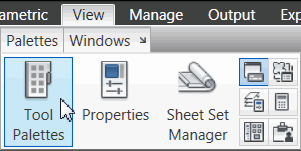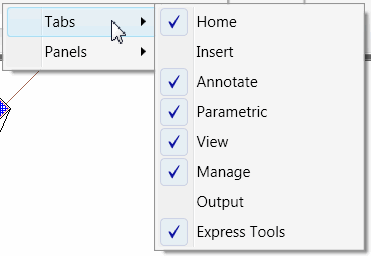
Michael’s Corner
 Michael's Corner is a monthly publication written by Michael E. Beall, Autodesk Authorized Author and peripatetic AutoCAD trainer. Michael travels all over the USA, bringing his fantastic experience and great understanding of AutoCAD to his clients. Michael's Corner brings together many of the tips, tricks and methods developed during these training sessions for the benefit of all users.
Michael's Corner is a monthly publication written by Michael E. Beall, Autodesk Authorized Author and peripatetic AutoCAD trainer. Michael travels all over the USA, bringing his fantastic experience and great understanding of AutoCAD to his clients. Michael's Corner brings together many of the tips, tricks and methods developed during these training sessions for the benefit of all users.
Michael's Corner provides something for every AutoCAD user. Every month, a number of articles cover a wide range of topics, suitable for users at all levels, including "The Basics" for those just starting out. Essentially, the aim of Michael's Corner is to help all AutoCAD users work smarter and faster.
This month…
October - One-derful!!!
It's a God-thing.
I had no idea that 14 years ago I would be given the opportunity to make an impact on the professional lives of so many. Only God knew what was ahead, and hopefully, the contributions I have made through Michael's Corner have equipped many of you to be more productive and a bit more savvy using AutoCAD. And apart from all the AutoCAD bashing that is going on, I'm sure it has a long life ahead.
So, in an effort to keep the AutoCAD fires burning, here's what I have for my final installment…
…A reminder on how to customize your hot keys
…Three Power Tools — one for Zoom, one for editing, and one for Layers
…Two Odd Spots — one for Layers and one for Hatching
…Buried text treasure
…And how to Search 14 years of the Archives
As for what's ahead for me, I will continue to present a variety of AutoCAD sessions — Fundamentals, Intermediate, Customizing, Updates, and 2D & 3D. I will also keep training CAP Designer, 20-20 Worksheet, Visual Impression (those three from 20-20 Technologies, Inc.), and some Revit Fundamentals. Next year I'm looking forward to being very involved in training CET (from Configura, Inc.) when Herman Miller joins the growing number of manufacturers embracing this software that is being touted as the ‘Future of Space Planning’. Personally, I'm looking forward to spending a bit more time with Donna, my lovely bride of 30 years. When this posts, we'll probably be within days of going on our 30th Anniversary vacation to the Tanque Verde Ranch in Tucson; Ee-Hah! We had such a good time when we went for our 20th, we figured we'd do it again!
Ah, and I'm hoping to have The AutoCAD Workbench, Final Edition out before snow flies.
And with that, Mike drop! …so to speak.
The LORD bless you and keep you;
The LORD make His face shine upon you,
And be gracious to you;
The LORD lift up His countenance upon you,
And give you peace. Numbers 6:24-26
This month's articles
Change F1 to ESC
Smoother Zoom
Stretch with Extension
Lock Layers with a Crossing Window
Layer Columns & Hatch Background Color
Text Frame on Mtext
From the Vault
Ideas for Personalizing the Ribbon
 Word to the Wise: Workspace
Word to the Wise: Workspace
The condition of the Ribbon is stored in the current workspace. I would suggest, therefore, creating a workspace to save how you currently have your drawing environment setup. After creating a ‘status quo’ workspace (what David Watson very wisely referred to as a "fall back strategy" in his coverage of the ribbon last July), save another workspace to be your Ribbon ‘playground’.
For detailed coverage on creating a Workspace, see Michael's Corner, May 2009.

Ribbon Terms
Heidi Hewitt has a wonderfully succinct phrase to define the mechanics of the Ribbon:
"Each tab contains multiple panels, and each panel contains multiple tools."Tabs:AutoCAD 2010 has 8 tabs in the Ribbon, as shown in the above figure. AutoCAD 2009 has 6 tabs: Home, Blocks & References, Annotate, Tools, View, and Output.
Panels: The panels are the large parts of the Ribbon. This figure shows the Text panel for the Annotate tab.

The black triangle beside the tab title [A2010], indicates the panel can be expanded to display more tools. The arrow in the corner typically designates a Style dialog box.
 Tools: The Tools are the commands on the panels. If the tool has a black triangle (as shown for the Multiline Text tool on the A2010 Annotate panel), that tool can be expanded to display additional tools.
Tools: The Tools are the commands on the panels. If the tool has a black triangle (as shown for the Multiline Text tool on the A2010 Annotate panel), that tool can be expanded to display additional tools.
End of Vocabulary Lesson.
Favorite Feature
 The Minimize arrow. There are three settings to the Minimize arrow: Minimize to Panel Titles (my favorite condition), Minimize to Tabs, and Show Full Ribbon.
The Minimize arrow. There are three settings to the Minimize arrow: Minimize to Panel Titles (my favorite condition), Minimize to Tabs, and Show Full Ribbon.
 When the Ribbon is minimized to Panel Titles, you have access to the Ribbon panels, but they're not all displayed at once. When you hover over the desired panel group (as shown in the figure for the Palettes panel of the View tab), then the tools are displayed.
When the Ribbon is minimized to Panel Titles, you have access to the Ribbon panels, but they're not all displayed at once. When you hover over the desired panel group (as shown in the figure for the Palettes panel of the View tab), then the tools are displayed.
Ribbon Management via the Shortcut Menu
 The Plot command can easily be accessed in the Quick Access Toolbar (the panel beside the big red "A"), so let's turn off the "Output" tab of the Ribbon.
The Plot command can easily be accessed in the Quick Access Toolbar (the panel beside the big red "A"), so let's turn off the "Output" tab of the Ribbon.
Right-click on any element of the Ribbon and you get a shortcut menu with two very important items: Tabs and Panels.
At this point, you've probably made the mental leap on where to go from here, but here's one more insight: The Panels are displayed for the current Tab.
Parting Comment
 Save your Workspace using click the name in the dropdown list.
Save your Workspace using click the name in the dropdown list.
The Basics
- Dual Dimensions in a Dim…
- UCSICON Options
- "Best of" Basics: Irreg…
- Tool Palette Basics
- Original Dimension Value
- Possible Solutions to th…
- Avoid Using 'Standard' i…
- Shorten the Plot Scales…
- Update the Source File B…
- User Increment Angles fo…
- Drawing Information
- 'Sign Language'
- Rotate with the Copy Opt…
- Use the INSERT Osnap on…
- To or From the Current L…




